Supplier Risk Management Software
Gain a comprehensive understanding of the risks associated with your vendors, suppliers, and service providers using supplier risk management software. Create a vendor log, automate vendor assessments, implement effective controls, and track risk and performance against SLAs, KPIs, and compliance obligations to manage third-party risks effectively and safeguard your supply chain.
Monitor Vendor Performance
Create a vendor repository that stores essential data on contracts, costs, SLAs, and KPIs – enabling ongoing monitoring of supplier performance management key metrics.
Automate Vendor Risk Assessments
Leverage our supplier risk management software to automate vendor risk assessments. Both staff and suppliers can complete these assessments via online forms with all data feeding into the relevant vendor profile in the platform.
Online External Vendor Portal
Offer third parties’ access to a vendor portal where they can fill out questionnaires, surveys, and risk assessments online – gathering extensive data to easily compare vendors and assess risks.
Third-Party Risk Intelligence
Connect our supplier risk management software with risk intelligence providers via APIs to gain insights into vendor risks, including ethical practices, financial stability, legal and regulatory compliance, and cybersecurity threats.
Supplier risk management software capabilities
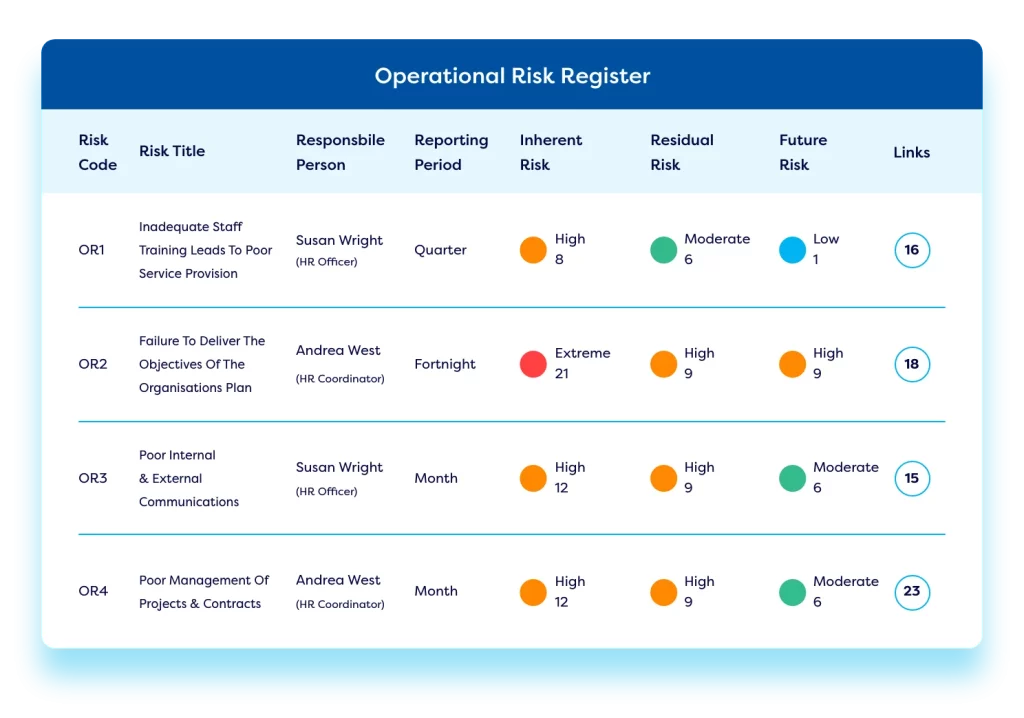
Create a vendor register
Set up an online vendor register within our supplier risk management software to record vital information for each vendor, including costs, contracts, key contacts, Service Level Agreements (SLAs), and Key Performance Indicators (KPIs) – building a centralised third-party inventory. Streamline the onboarding and offboarding processes, perform vendor risk assessments, and implement score-carding and benchmarking for each supplier. All data is automatically synced to the corresponding vendor profile, making it easy to compare vendors, rate their performance, and address any issues with underperforming service providers.
Automated vendor risk assessments
Employees can complete vendor risk assessments online, with all data automatically integrated into the vendor risk assessment software for streamlined vendor oversight. Organisations can tailor forms for various supplier types, ensuring all crucial evaluation criteria is captured as part of regular supplier risk assessments. The Camms’ customer and vendor risk assessment software enables the creation of conditional workflows for a variety of different risk assessments. This allows companies to design comprehensive questionnaires to assess key supplier attributes and use responses to guide workflow paths and facilitate approvals & signoffs. Software automation can also be used to manage regular vendor reviews – with automated alerts and workflows used to track the progress of any corrective actions.
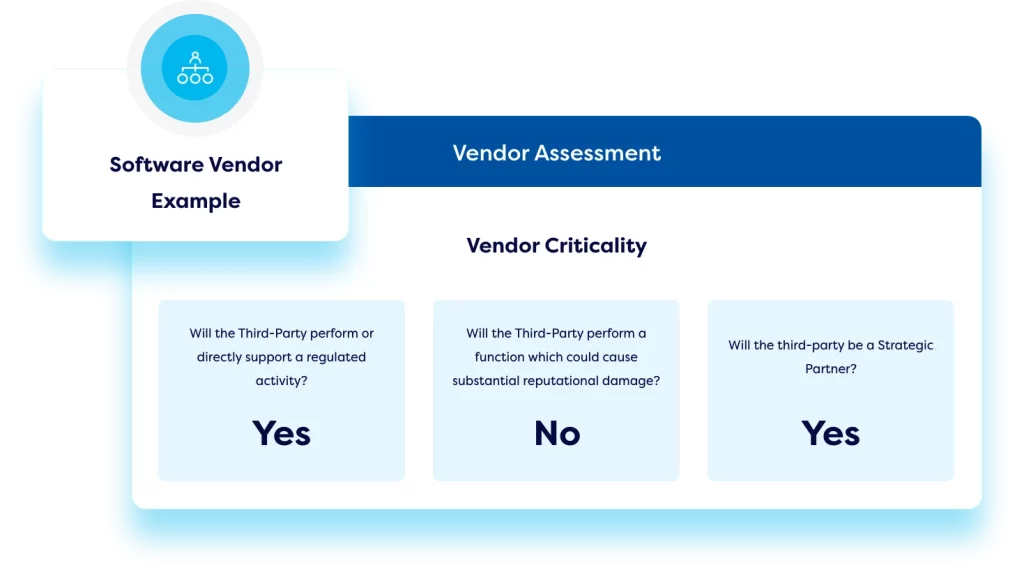
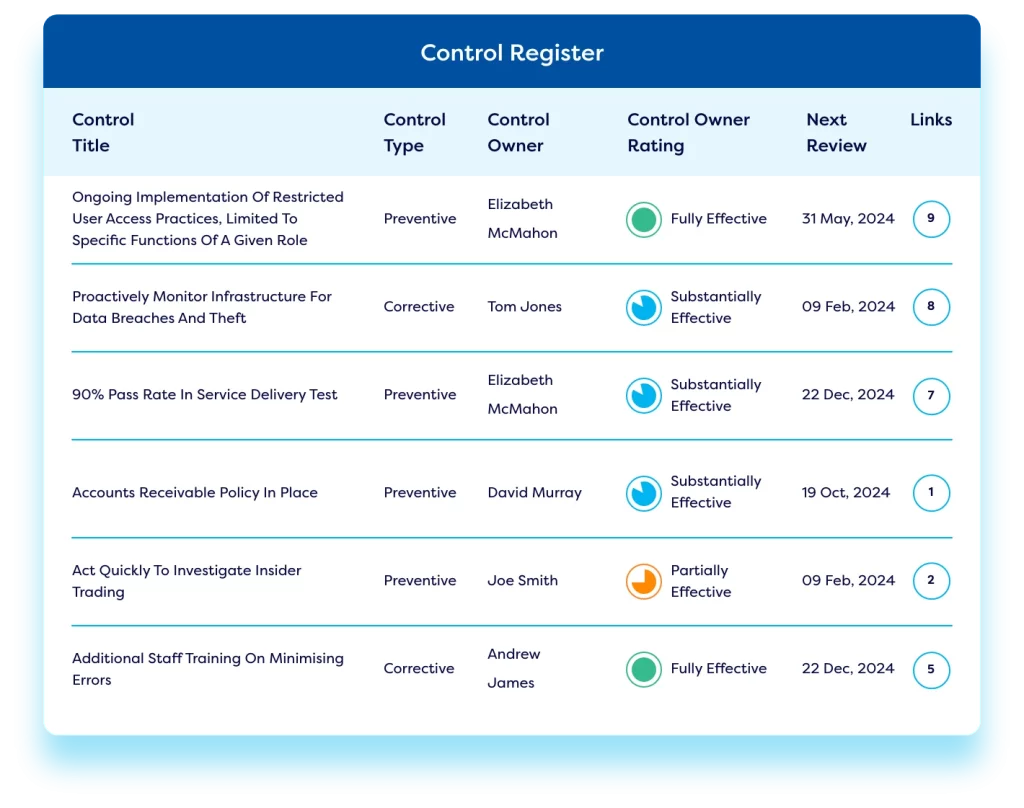
Online vendor portal
With the Camms third-party risk management vendor portal, you can eliminate the hassle of manually emailing questionnaires and compiling vendor risk assessment responses. Vendors can log in to the platform and complete questionnaires and surveys online. The results are instantly captured within the system, seamlessly integrating into the broader workflow. Once a vendor completes their assessment, it can automatically trigger alerts and initiate the next steps for internal staff, ensuring efficient and effective third-party risk management.
Controls and risk mitigation
Build an online control library to set controls to mitigate vendor risk. Carry out regular control checks and control testing to ensure the controls are effective and functional. When risk reaches an intolerable level use automated workflows to capture and document the actions taken to reduce or address the risk. Setting controls safeguards the organisation from reputational risk.

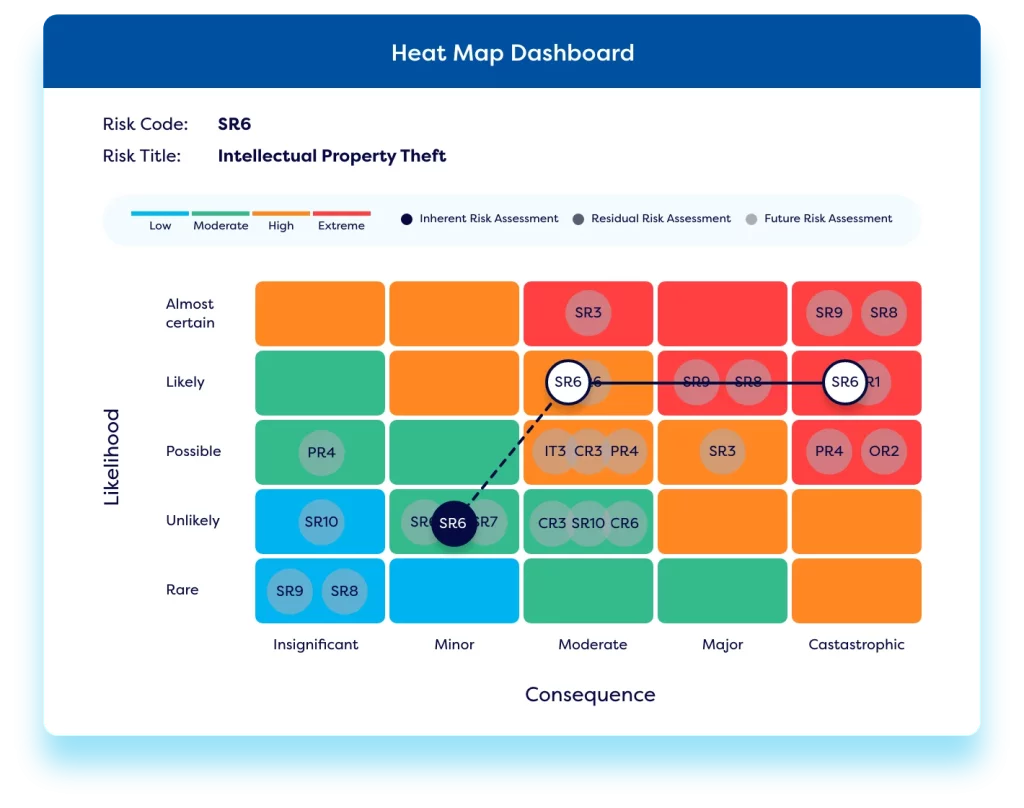
Real-time Dashboards & Reporting
Our vendor risk management solution allows organisations to create detailed reports on vendor risk exposure, giving executives clear insights into supplier dependencies and the risks involved. It also offers performance reporting against KPIs, SLAs, and industry standards, ensuring effective oversight of third-party risks and continuous performance monitoring – providing a holistic view of supplier risk. Use the vendor risk reporting outputs to enhance decision-making processes and improve operational efficiency.
Third-Party Risk Insights Through API Integrations
Enhance your supplier risk management program by leveraging our API integration to link vendor profiles with external risk intelligence providers. This enables you to receive real-time updates on supplier financial health, sustainability scores, sanction lists, cybersecurity ratings, and more. These updates are automatically synced with the vendor’s record in the Camms’ supplier risk management software, directly contributing to your reporting and analytics – enabling you to manage supplier risk with confidence.
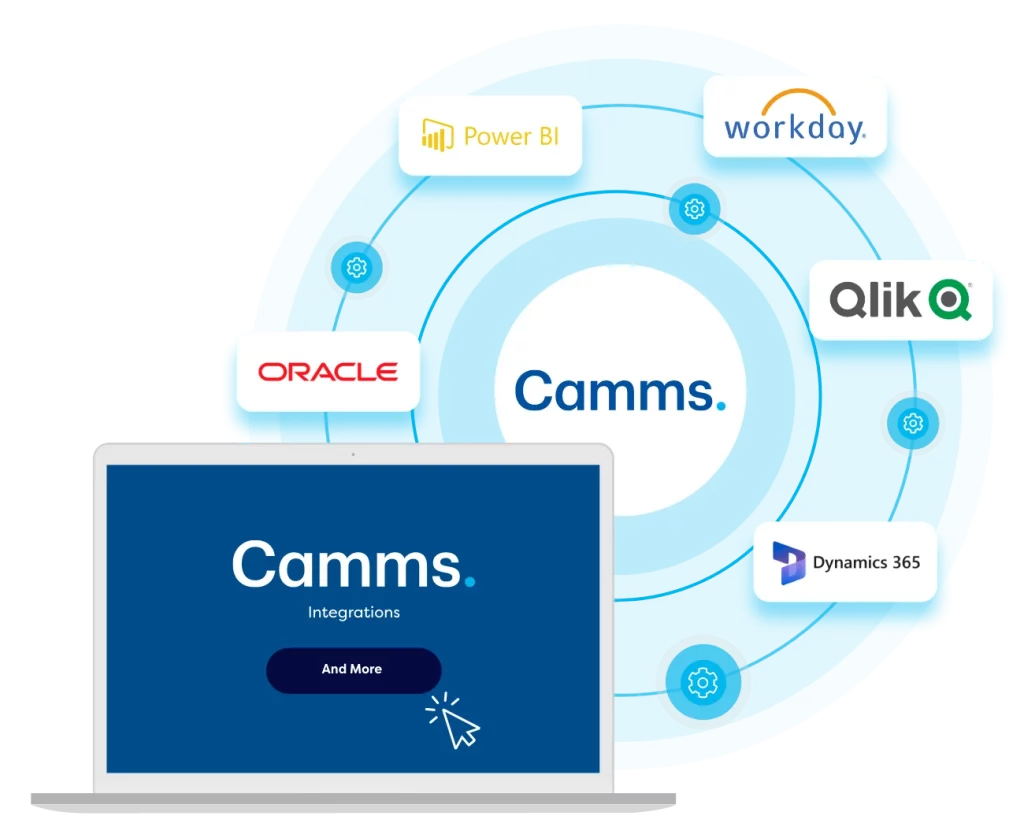
Regulatory Compliance Management
Guarantee that your vendors and suppliers meet all relevant compliance requirements with the compliance record-keeping functionality in our vendor compliance management software. Camms’ regulatory compliance capabilities are seamlessly integrated into the third-party risk management framework, enabling firms to easily access crucial compliance data and incorporate it into vendor evaluations – ensuring smooth and transparent compliance during supplier audits.
Your Supplier Risk Management Software Resources
The latest and hottest pieces of vendor risk management software content to stay in the know.

Using Automation to Build a Consolidated View of Third-Party Risk
In this eBook, experts explain the intricacies of an effective third-party risk management program. They share tools & techniques to automate the management process and reveal how organisations can get a holistic view of vendor risk.

3 Ways to Automate Third-Party Risk Management
In this blog discover why third-party risk management automation grants insight into vendor and supplier operations, clarifying the potential risks they carry for your organisation.
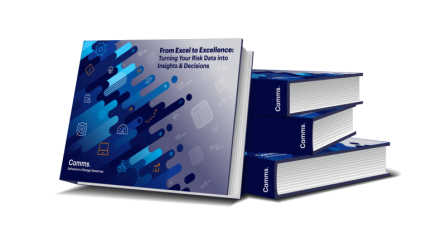
From Excel to Excellence: Turning Your Risk Data into Insights & Decisions
In this eBook, we explore why spreadsheets are outdated for risk management and help you to identify if your business is ready to swap spreadsheets for an automated GRC solution. Plus, we detail the top 10 reasons to switch from spreadsheets to software.
Why Choose Camms Software for your Supply Chain Vendor Management?
Aligning Vendor Risk and Compliance with Business Goals
Camms’ vendor risk management solution integrates vendor risk with your organisation’s objectives and business processes. This helps your team select low-risk, high-performing suppliers that align with your risk appetite and long-term goals & objectives.
Robust Data Security & Privacy
The Camms platform is built with strong security measures and certified to standards such as SOC Type 1&2, ISO 27001, and Cyber Essentials. It includes advanced permissions, encryption, and audit trails to ensure data privacy and meet IT security requirements.
Discover more about the Camms’ Supplier Risk Management Software
Frequently asked questions about
supplier risk management software
Supplier risk management involves identifying, assessing, and mitigating the risks associated with outsourcing business functions to external vendors and suppliers. Companies often depend on third parties for critical services like IT support, supply of goods and raw materials, financial services, and contract work, which can introduce vulnerabilities if not properly managed. Effective third-party risk management ensures that these external partners do not create security, compliance, or operational risks for the organisation that could impact their reputation and services.
To mitigate these risks and avoid supply chain disruptions, businesses typically conduct comprehensive due diligence on potential third parties. This includes background checks, financial stability assessments, and compliance reviews. Continuous monitoring and regular audits are also essential to identify and address emerging risks throughout the business relationship. This involves performing routine vendor risk assessments, compliance checks, and tracking vendor performance against Service Level Agreements (SLAs) and Key Performance Indicators (KPIs).
Supplier risk management software is a platform designed to help organisations effectively identify, evaluate, and mitigate risks associated with their external vendors and partners. These platforms typically offer features like automated vendor risk assessments, real-time performance monitoring, integration with third-party risk intelligence providers, and compliance tracking. By streamlining the vendor evaluation process from initial vetting to continuous oversight, these solutions ensure that potential vendor risks are proactively managed. Automation modernizes & automates vendor & supply chain risk management. Vendor risk management software solutions also typically support firms to manage any cybersecurity threats linked to IT vendors.
These solutions often incorporate industry best practices and frameworks for risk evaluation, including standardized risk assessments, supplier due diligence protocols, and contingency planning. Implementing a supplier risk management tool enables organisations to better detect vulnerabilities, maintain compliance, and safeguard their business interests while collaborating with external entities.
The Key features of supplier risk management software include:
Vendor Library: Create an online comprehensive repository of all your vendors, capturing essential details such as contracts, pricing, key contacts, SLAs, and KPIs. This centralised library facilitates vendor comparisons and helps build detailed profiles for each supplier.
Online Automated Risk Assessments: Enable both staff and vendors to complete risk assessments through online forms that feed directly into the vendors profile within the platform. Firms can customise assessment forms for various vendor types, and automate the regular distribution and reminders for risk assessment completion using automated workflows.
Real-Time Risk Monitoring: Use the supplier risk management software to track vendor risks in real time. Link your vendor risk register with supplier performance data via APIs, monitor risk levels, and link to external risk intelligence data for deep insights into vendor risk.
Robust Reporting Features: Access detailed dashboards & reports to easily track vendor risk levels and supplier performance. These instant reporting outputs help firms proactively identify, manage, and accept or mitigate risks associated with third-party relationships.
Third-Party Risk Intelligence: Supplier risk management platforms can integrate with external risk intelligence tools to evaluate potential threats from third parties, including financial stability, prosecutions, data breaches, compliance history, and operational risks.
Automated Workflows: Implement best-practice workflow automation with clear escalation routes to ensure that any emerging supplier issues are addressed quickly and efficiently.
Vendor Compliance: Many supplier risk management platforms offer features to monitor vendor performance and compliance with regulatory standards, ensuring that you partner with reliable and certified suppliers.
The importance and benefits of utilising supplier risk management software to effectively manage risks associated with external service providers, product suppliers, and vendors include:
- Increased Efficiency: Streamlining ‘risk assessment processes’ reduces the time and manual effort needed to evaluate and monitor third-party risks – enhancing the effectiveness of your vendor risk management program.
- Enhanced Risk Intelligence: Integrations with third party risk intelligence providers offer valuable insights into supplier-related news, including IT security threats, credit history, and compliance issues.
- Improved Visibility: Vendor risk management solutions enhance vendor risk management by providing real-time visibility through dashboards & reports based on current supplier performance data and risk assessment results.
- Reduced Administrative Burden: Automated workflows, online forms, and reporting outputs significantly cuts back on administrative tasks, boosting efficiency in the third-party risk management process.
- Effective Risk Reduction: TPRM solutions offer an active control library, third-party risk intelligence, regular vendor risk assessments and automated escalation workflows to help implement risk mitigation strategies – effectively reducing vendor-related risks.
- Accelerated Risk Response: Vendor risk automation tools swiftly gather and analyze vendor data, flagging potential risk & compliance issues in real time – allowing organisations to respond quickly to emerging threats and supply chain disruptions.
- Enhanced Accuracy and Consistency: Automation ensures accuracy and consistency in vendor risk data by applying standardized algorithms and criteria, minimizing human error and maintaining uniformity across third-party evaluations.
- Informed Decision-Making: Third-party risk platforms provide critical risk intelligence that supports decision-making processes when selecting and managing vendors.
- Comprehensive Vendor Risk Management: Vendor risk management solutions help address various types of risks from third parties including reputational, cybersecurity, strategic, and compliance risks – enabling thorough assessment, management, and monitoring.
- Seamless Integration: The solutions from risk management software vendors facilitate the integration of third-party services into core business functions, ensuring vendors meet industry standards, compliance requirements, SLAs, and KPIs.
- Technology-Driven Value: Platforms from risk management vendors leverage technology to enhance the value of your vendor network and supply chain, ensuring compliance, profitability, and resilience.
- Automated Assessments: Platforms from vendor risk management companies automate third-party risk assessments, providing timely results that are easily reportable.
- Enhanced Accountability: By automating risk mitigation plans and continuously monitoring third-party performance, supplier risk management platforms improve accountability and lower risk levels.
- Minimized Disruption: Effective vendor risk assessment software helps to minimise the impact of supply chain disruptions and ensures regulatory compliance across your vendor network.
- Reduced Security Risk: This specialized tool helps in assessing, monitoring, and mitigating security risks to optimize supply chain resilience and protect company data from cybersecurity risk.
When selecting supplier risk management software, firms should consider the following:
- Integration with Risk Intelligence Providers: Ensure that the supplier risk platform integrates with external risk intelligence sources to receive real-time updates on supplier risks, such as financial issues, IT security breaches, data privacy concerns, and regulatory penalties.
- Risk Categorization and Rating Framework: Firms should define how vendor risks will be categorized and rated to maintain a uniform rating system across the organisation.
- Customization for Internal Requirements: Verify that the third-party management platform can be tailored to meet your specific needs within costly fees, vendor risk assessment forms and workflows for different vendor types should be able to be customised by your team.
- Configurability: Assess whether the supplier risk management software can be adapted to address your organisation’s unique requirements and processes.
- Scalability: Evaluate if the platform can scale with your organisation’s changing vendor risk management and compliance demands. Additional functionality you might need in the future could include best-practice functionality for enterprise risk management, regulatory compliance, ESG, incident reporting, health & safety, business continuity, and project management.
- Data Privacy and Security: Review the solution’s data privacy and security features, including any additional security options, to ensure they meet your IT team’s requirements.
- Integration with Existing Systems: Check if the supplier risk platform can integrate with your current systems through APIs to ensure a unified source of truth for third-party risk data and to support real-time monitoring.
- User Access and Data Needs: Consider the platform’s users, the types of data they will input, and the reports and metrics they require, including their format and frequency – this will ensure the implementation of the supplier risk management platform meets stakeholder needs.
- Flexible Pricing Model: Analyze the pricing structure of the supplier risk management platform to ensure it offers flexibility based on user numbers and the number of modules, allowing you to pay only for the features you need.
- Comprehensive Reporting: Look for third-party risk solutions that provide extensive reporting capabilities for leadership teams to make informed decisions on vendor selection.
- Alignment with ISO 31000: Ensure that the supplier risk management solution aligns with your internal risk and compliance needs and adheres to the best practices outlined in ISO 31000.
The key features of supplier risk management software include:
Customizable Risk Assessment Forms: Choose customer and vendor risk assessment software that provides customisable online risk assessment forms. The best vendor risk management software should allow you to tailor assessments for various vendor types, with all data automatically integrated into the platform, enabling precise evaluations based on specific needs and industry standards.
Detailed Vendor Profiles: Opt for vendor risk management tools that feature an online vendor library, where you can create detailed profiles for each critical vendor. These profiles should include contract details, costs, key contacts, SLAs, KPIs, and relevant risk intelligence, along with risk assessment results and scores for best-practice vendor management.
Online Vendor Portal: Select vendor risk management software with an online vendor portal that enables third-party vendors to complete questionnaires, surveys, and risk assessments online, with data seamlessly flowing into the supplier risk management tool.
API Integrations: Choose vendor risk management software that supports API integrations to pull in transactional data related to supplier performance. This feature allows you to monitor risk levels and adherence to SLAs and KPIs effectively throughout your vendor network and supply chains.
Continuous Risk Monitoring: Look for third-party risk management tools that integrate with risk intelligence providers to continuously monitor suppliers for financial stability, compliance issues, cyber incidents, fraud, and other critical news that could impact your organisation.
Robust Reporting and Analytics: Opt for vendor risk management providers with strong reporting and analytics capabilities. Vendor risk platforms should offer detailed insights and analytics on third-party risk exposure through dashboards & reports, aiding informed decision-making and regulatory compliance.
Workflow Automation: Seek supplier risk management software solutions that offer workflow automation. This feature should automate routine tasks such as distributing risk assessments and surveys, and workflows can also formalize processes for approvals, escalations, and action management – improving efficiency and reducing human error.
Vendor Risk Scoring: Choose a vendor risk platform that provides vendor risk scoring – generating scores based on industry benchmarks and standards to offer a clear view of potential risks – ensuring high quality vendor relationships.
Compliance Management: Ensure the vendor compliance management software you choose includes compliance management features to verify that third parties adhere to relevant regulatory requirements and standards, thereby reducing legal and regulatory risks and ensuring compliance with regulations.
Incident Management: Look for supplier risk management solutions that offer incident management capabilities to track and manage incidents related to third parties – ensuring timely resolution and documentation.
Supplier Audits: Opt for vendor risk management platforms that facilitate comprehensive supplier audits, allowing easy comparison of vendors and the associated risks they pose.
Business Continuity Capabilities: Select supplier risk management software that includes business continuity features, enabling a structured approach to assess and manage business continuity risks from third parties.
Vendor or supplier risk management differs from traditional risk management by specifically targeting risks associated with third-party vendors and suppliers. Supplier risk management focuses on evaluating, monitoring, and mitigating risks that arise from external partnerships, using specialized software to automate these processes. It typically involves, vendor risk assessments, questionnaires, and surveys, analyzing vendor profiles & news stories, monitoring vendor performance against SLAs & KPIs, and formalizing the onboarding & offboarding process of new suppliers. This approach ensures continuous oversight of vendor compliance, performance, and potential threats, making it particularly effective in managing the complexities of third-party relationships.
Traditional risk management, on the other hand, has a broader scope, addressing a wide range of risks within an organisation, including operational, financial, strategic, cyber, and regulatory risks. It required an active risk register, regular risk assessments, control implementation and control monitoring and testing and risk remediation processes. While it may include some assessment of third-party risks, it typically lacks the dedicated tools and processes found in supplier risk management. As a result, traditional risk management methods may be less efficient and thorough in managing the specific risks associated with vendors.
Get started and request a demo
Fill out our simple form to see the Camms supplier risk management software in action

